A question I seem to get asked a lot these days is whether training for Everest Base Camp is necessary or not. Training for a trek is a personal thing, and I could give a million answers to this one question. It’s important to start by asking yourself a few basic questions. Am I in good physical shape? Do I have endurance? Am I able to carry the weight of my bag on my back for over five hours a day? If the answers to these questions start to scare you, don’t freak out. Trekking is just walking for long distances. And in this case, at a higher altitude. Don’t overthink it too much.
Before I left for Nepal, I didn’t have a lot of free time to train, and I didn’t have a fancy gym membership. I’d read a few articles online about how to train for EBC, and they sounded more like a boot camp to join an elite military op. For those of you who can’t commit to a 3-hour workout every day at a $300 a month gym, here’s the workout plan I followed. It was free, and I did it in my spare time. Was I able to run to Base Camp? Nope. Was I able to walk and enjoy myself without wanting to give up constantly? Yup.
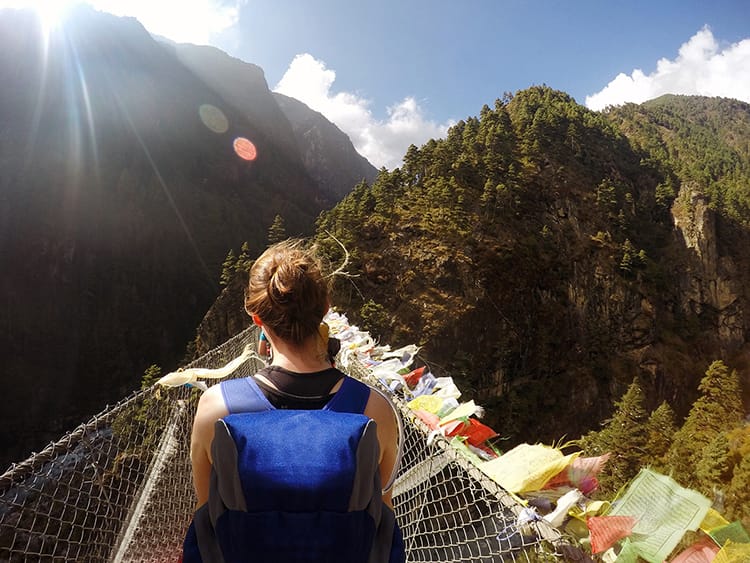
Wear Your Backpack Everywhere
Training for Everest Base Camp doesn’t have to be expensive or extreme. Nor does it require a large time commitment. Simply buy your backpack in advance and fill it with some weight. If you have a porter, fill it with 20lbs. If you don’t have a porter, fill it with 30lbs. Hopefully, you won’t need to pack this much for your trek, but the weight of your pack will feel heavier at altitude. So, it’s better to train with something heavier than you’ll be bringing.
Now for the fun part. Wear your bag everywhere. Wear it to work. Wear it to the grocery store. Wear it at the gym. Wear it when you walk the dog. Wear it when you cook dinner. If you drive to work and have a desk job, then wear it up and down your stairs every night. This may sound stupid, but the hardest part of every trek for me is always the weight in my bag. Most people don’t use their shoulder and back muscles that much and training them before the trek will be a big help.
Always Take the Stairs
The best training I did prior to my trek was always choosing to take the stairs. I lived in New York City at the time and had to take the subway to work every day. I would always choose stairs over escalators or elevators. You’d be surprised how quickly this adds up (especially if you’re wearing your backpack). I was doing over 40 flights of stairs a day, which was a big deal considering how I lived in such a flat city. I also lived on the 22nd floor of the apartment building, and I would try to walk up at least the first five flights if I had energy at the end of the day.
If you don’t have stairs to take every day, then try to commit to going up and down the stairs in your house ten times each day. Make little challenges. For instance, every time you have to go to the bathroom, use the bathroom on the opposite floor you’re on. If you really want to challenge yourself, try going up the stairs every time you look at your cellphone. You’ll either end up in fantastic shape or stop answering your cell.
Practice Yoga
Wait what? Yup, I said yoga. Half of trekking is mental. One of the things I’ve found is that it’s not necessarily the strongest person who succeeds in trekking. Often, it’s the person who is mentally strong who makes it to the top. While trekking, you’ll often feel physically exhausted. If you give into that feeling, the trek will suck. If you’re able to focus your mind and overcome that feeling, then you’ll be able to enjoy the trek more. Choose a yoga class or YouTube video that focuses on holding poses for long periods of time. You can try looking for Hatha (great for beginners) and Yin Yoga (a little more intense). This will build muscle strength as well as mental strength.
On top of that, yoga helps you focus on your breathing. Being at altitude can be difficult. You may wake up at night short of breath. If this happens, it’s important to stay calm and slow your breathing to a natural pace. While walking, being able to breathe properly will help you acclimate better. I’d recommend trying to do a half hour to an hour of yoga 2-3 times a week. More is better, but if you’re tight on time, a few times a week will do the trick.
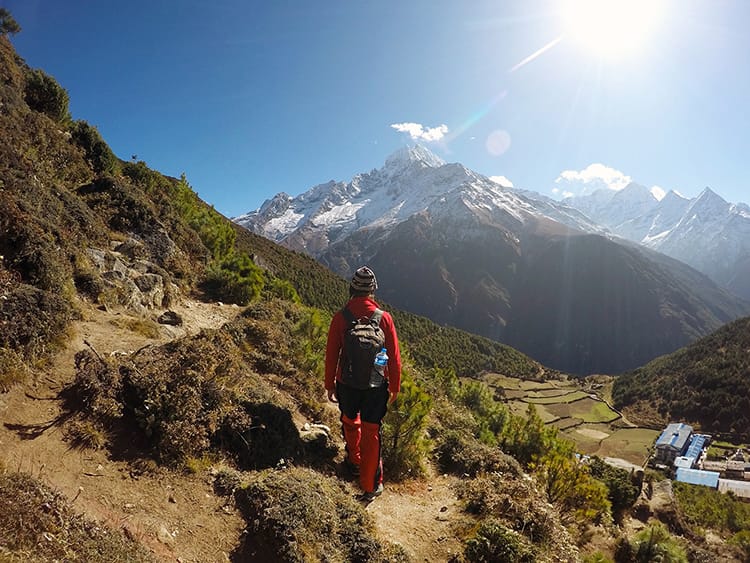
Do Wall Sits and Squats
This has nothing to do with the trekking part of getting to Everest Base Camp, although it won’t hurt. This one is to help you train for the toilets. Most of the time, you’ll be using a squat toilet, and while I don’t find this particularly difficult, it is a little harder when you’ve spent the entire day walking and your legs are dead tired. No one wants to aim over a squat toilet with shaky muscles. Do three sets of ten squats a day and hold a wall sit for 30 seconds to a minute. It will only take a few minutes to complete, and you can do it while you watch TV. Trust me, one day you’ll be thanking me. Oddly, you’ll probably be in a squat toilet when you do, but I’ll be flattered, nonetheless.
Workout Your Abs
I’m a big fan of doing abs with a medicine ball. I bought one for my home, but you can also fill an old juice bottle with water. Just make sure the cap is on tight. YouTube some ab workouts and find one you don’t hate. I try to keep it super simple. Sit ups, Russian twists, planks, etc. These are all great ways to work your core without using massive machinery. I like to do about 10-15 minutes of abs a day, but you can do these on the days you don’t do yoga. When you’re walking up hill with a pack on your back, your abs will come in handy. Most people don’t think their core is that important, but this will really help you in the long run.
This is exactly how I prepared for the trek before leaving for my trip. I happened to make a few other stops before getting to Nepal which was both good and bad. I wore my backpack more because I was backpacking, but I also got lazy and stopped doing yoga, abs, etc. while I was on the road. I was probably in better shape when I left New York then I was when I finally arrived in Nepal. The Everest Base Camp Trek is difficult, but training for it doesn’t have to feel like boot camp. Making small changes to your daily life will make the trek more enjoyable.
Have any questions about training for Everest Base Camp from home? Ask me in the comments!
You might also like…

Michelle Della Giovanna
Writer at Full Time Explorer
I’m just your average New Yorker who quit her job in the fashion industry to explore the world. Come find out what it’s like to trade in five-inch heels for squat toilets.
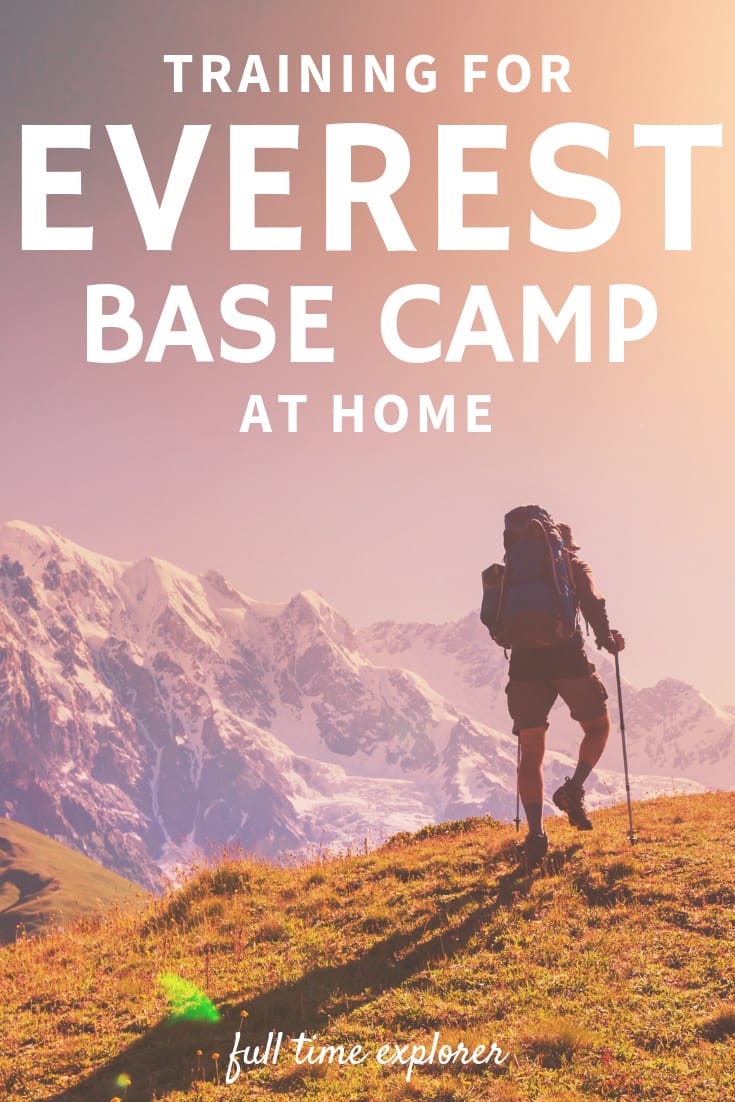
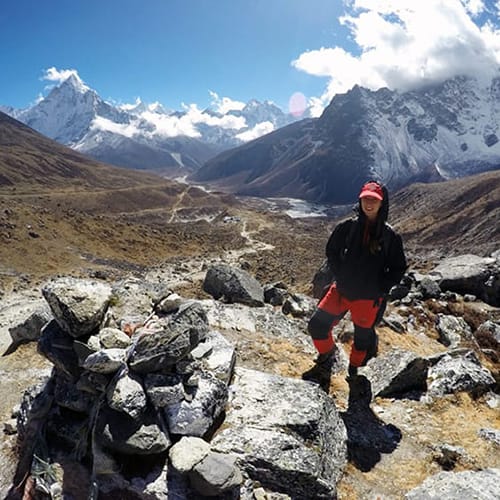

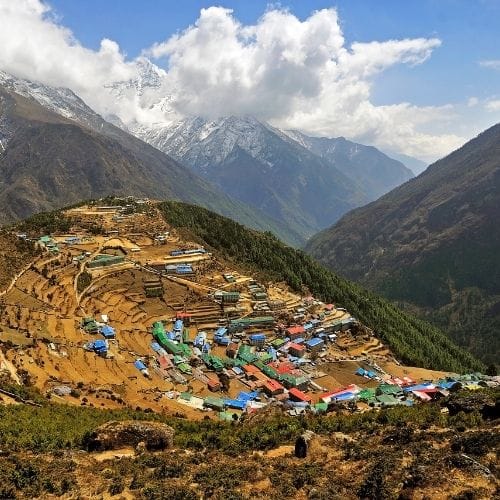
I came to know you from a Pinterest post and always have found your writings informative. Keep up the good work.
Few things to add: One of the main training is aerobic training so that we can cope with the high altitude/low oxygen conditions on the Everest Base Camp Trek.
Most people only wear boots and hiking dresses on the day of the hike. This is totally wrong. Like you mentioned, walking upstairs will help increase stamina and endurance capacity, one should use the dresses and boots that he or she is going to use in the trek. Doing so will make you comfortable walking high altitude wearing hiking boots and light clothes.
Thank you so much Sanjib!
Those are great points…especially wearing your hiking boots and backpack prior to the trek! That’s extremely important for training and makes the trek much more enjoyable.